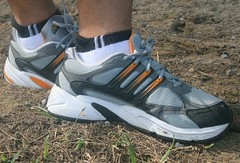LIPIDS
- Fats (solid), oils (liquid) and waxes.
- Lipids are compounds that consist of carbon, hydrogen and oxygen.
- A molecule of fat consists of 2 parts. The main part is called GLYCEROL and attached to it are three molecules of FATTY ACIDS. Different kinds of fats contain different fatty acids.
FUNCTIONS OF LIPIDS
- Reserve supply of energy when food is insufficient.
- Fats provide twice the amount of energy as carbohydrates.
- Stored beneath the skin (prevents heat loss) and around delicate organs (provides protection).
- Transport fat-soluble vitamins: Vitamins A, D, E and K.
- A constituent of the cell membrane.
EXTRA INFORMATION
- Unsaturated fats are 'good' fats. Found in Fish oils and vegetables.
- Saturated fats are ‘bad’ fats. Saturated fats increase the level of cholesterol in the body. Found in animal fats e.g. butter, burger, meat etc.
- Studies have shown that a diet rich in cholesterol and saturated fats increases the risk of heart disease.

